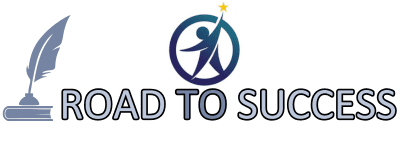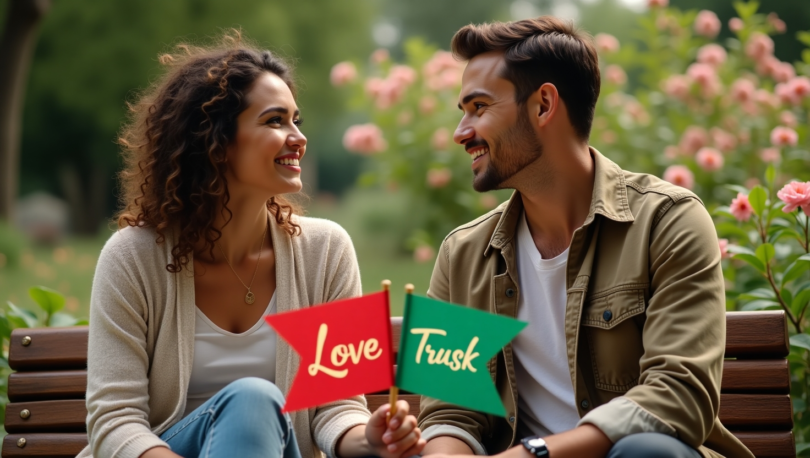When it comes to relationships, we’re often taught to run from red flags and chase green flags. We seek out partners who display healthy behaviors while avoiding those who seem problematic. But what if we told you that sometimes red flag can actually lead to a successful relationship, while green flags could sabotage one? It might sound counterintuitive, but let’s break it down.
Headlines
Understanding Red Flags and Green Flags in Relationships
How Red Flags Can Strengthen a Relationship
How Green Flags Can Sabotage a Relationship
The Balance Between Red and Green Flags
Understanding Red Flags and Green Flags in Relationships
Before diving deeper, let’s clarify what we mean by red flags and green flags:
- Red Flags are warning signs that indicate potential problems in a relationship. They could be signs of toxicity, emotional unavailability, or even personality clashes.
- Green Flags are positive indicators that suggest a person is emotionally mature, kind, and a good partner.
In an ideal world, avoiding red flag and embracing green flags would guarantee happiness. But real relationships are much more complex. Sometimes, what we think are red flags are just challenges that, when handled correctly, can strengthen the bond. On the other hand, blindly trusting green flags can lead to complacency and unrealistic expectations.
How Red Flags Can Strengthen a Relationship
Not all red flags mean the relationship is doomed. Some issues, when addressed with emotional intelligence and conflict resolution skills, can lead to deeper intimacy and growth. Here’s how:
1. Red Flags Force You to Develop Strong Communication
Let’s say your partner has poor conflict resolution skills. Maybe they shut down during arguments, which can feel like a red flag. However, if both partners work on emotional intelligence and communication, this “red flag” can actually lead to a healthier dynamic in the long run.
📌 Example: A couple struggling with different communication styles learns to compromise and listen actively, leading to better understanding and emotional bonding.
2. Red Flags Reveal Areas for Personal Growth
Red flag don’t always mean your partner is the problem. Sometimes, they expose your own insecurities or unresolved trauma.
📌 Example: If you feel triggered when your partner needs personal space, this could be an opportunity to address your own attachment style or fears of abandonment.
3. Stress Tests the Relationship
Hardships in a relationship can reveal how strong the foundation really is. Facing challenges together can build resilience, leading to deeper emotional bonding.
📌 Example: A couple dealing with financial struggles might learn to support each other emotionally, leading to a more fulfilling and lasting relationship.
4. Red Flags Help You Set and Enforce Boundaries
Not all red flag need to be dealbreakers—but they should prompt discussions about boundaries and expectations.
📌 Example: If a partner struggles with jealousy, instead of running away immediately, the couple might set healthy boundaries and work through it together.
How Green Flags Can Sabotage a Relationship
Green flags are great, but they can sometimes lead to unexpected issues, especially if we idealize them too much. Here’s how they can backfire:
1. Green Flags Can Create Unrealistic Expectations
A partner who is overly accommodating and conflict-avoidant might seem perfect at first, but over time, lack of disagreement can stunt growth. Disagreements help people understand each other’s perspectives and build stronger connections.
📌 Example: If your partner never argues, it might mean they’re suppressing their needs, which can later lead to resentment.
2. Green Flags Can Lead to Complacency
When everything seems too perfect, people may stop putting in effort. Healthy relationships require continuous effort and adaptation.
📌 Example: If a relationship starts strong because both partners are patient and kind, but they stop communicating about deeper issues, problems might go unnoticed until they explode.
3. Green Flags Can Hide Red Flags
Sometimes, people with many green flags also have hidden toxic relationship patterns. A partner who is always emotionally available could be codependent, leading to an unhealthy dynamic over time.
📌 Example: A person who is always there for their partner may seem loving, but they could also be neglecting their own needs, leading to burnout and resentment.
The Balance Between Red and Green Flags
So, if red flag aren’t always bad and green flags aren’t always good, how do you navigate relationships wisely? Here are some relationship success factors to keep in mind:
✅ 1. Look for Growth, Not Perfection
A great relationship isn’t about avoiding red flag completely—it’s about finding someone willing to work through challenges with you.
✅ 2. Embrace Healthy Conflict
Disagreements aren’t a sign of a failing relationship. What matters is how you and your partner handle them.
✅ 3. Prioritize Emotional Intelligence
Whether dealing with red or green flags, self-awareness, active listening, and empathy are key to making a relationship thrive.
✅ 4. Check for Patterns, Not Just One-Time Behaviors
A red flag becomes a real issue when it’s a recurring behavior with no effort to change. One bad fight doesn’t mean a relationship is doomed, but repeated unhealthy patterns are cause for concern.
✅ 5. Know When to Walk Away
Some red flag are true dealbreakers. Abuse, manipulation, and consistent lack of respect should never be tolerated. Healthy relationships require mutual respect and emotional safety.
Final Thoughts: A New Perspective on Red and Green Flags
At the end of the day, relationships are complex. Red flag aren’t always dealbreakers, and green flags aren’t always guarantees of success. Instead of running at the first sign of trouble or assuming a “perfect” relationship will stay that way, focus on growth, communication, and emotional intelligence.
A successful relationship isn’t about avoiding all red flag—it’s about knowing which challenges you and your partner can work through together. Likewise, don’t get too comfortable just because things look good on the surface. Real love takes effort, understanding, and the ability to navigate both red and green flags wisely.








[…] How Red Flags Can Lead to a Successful Relationship (and How Green Flags Can Sabotage One) […]